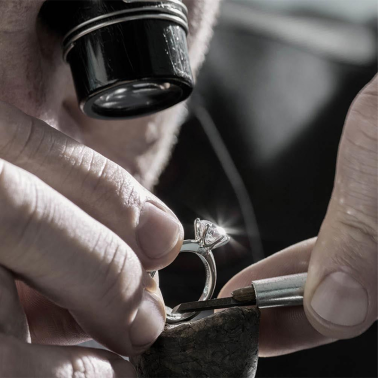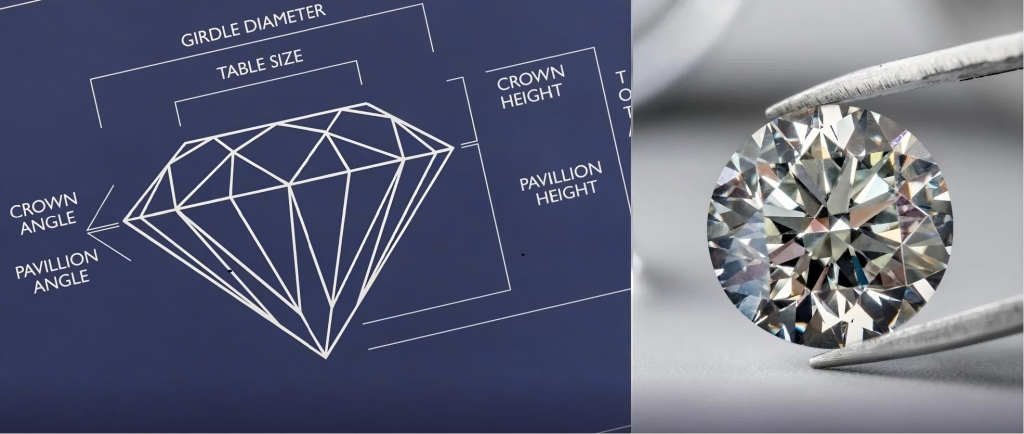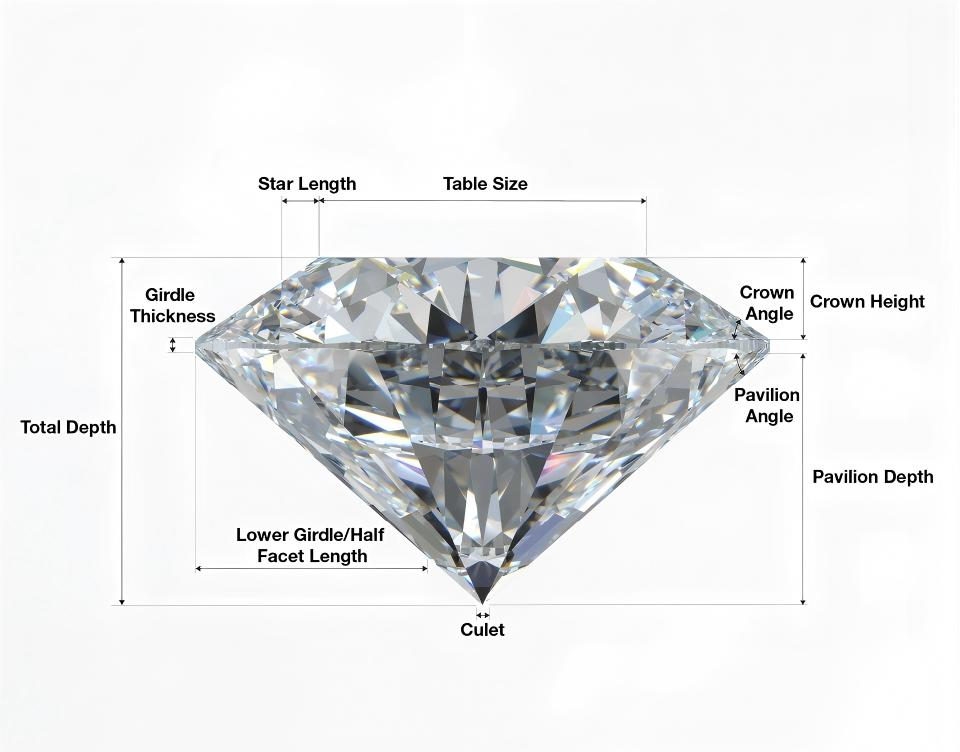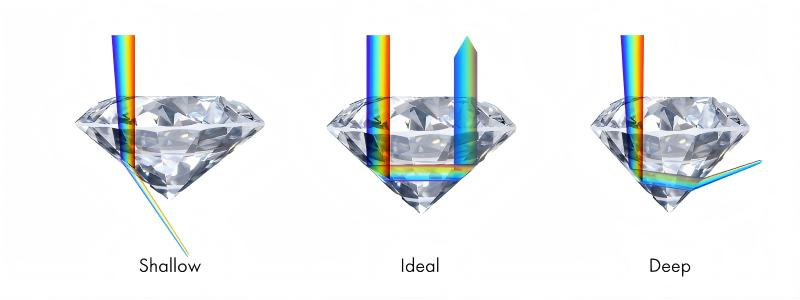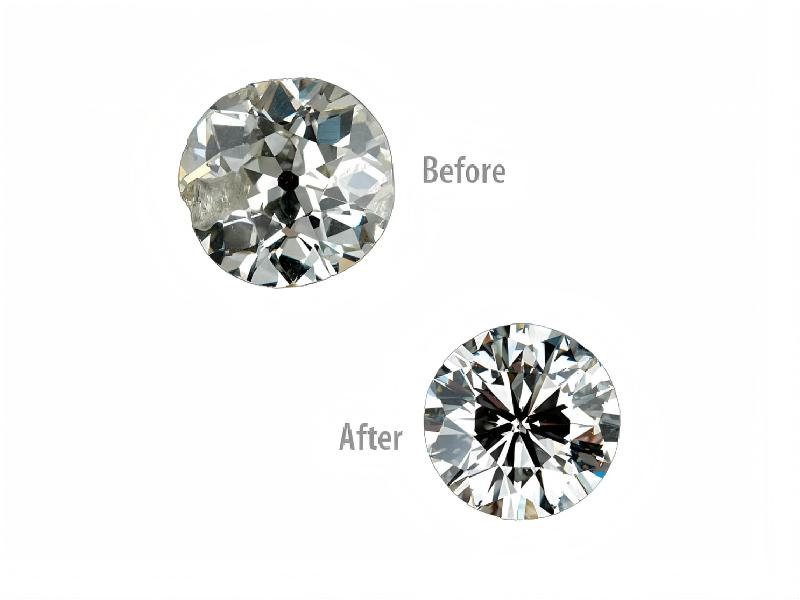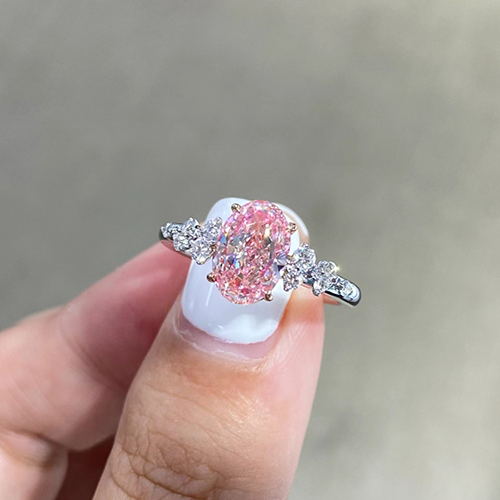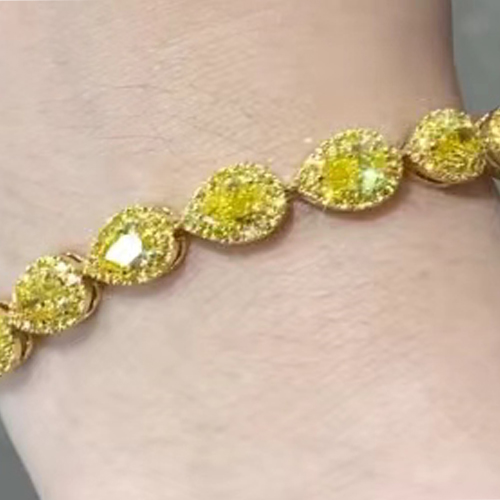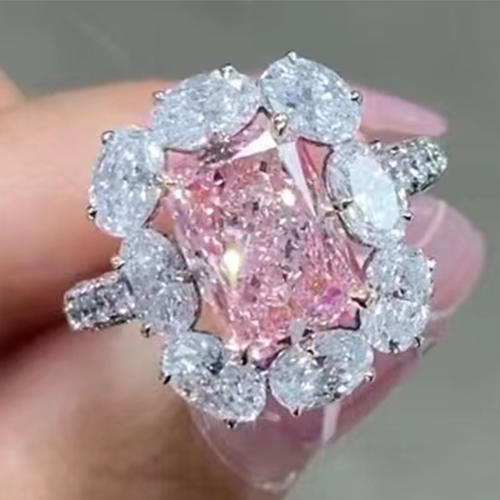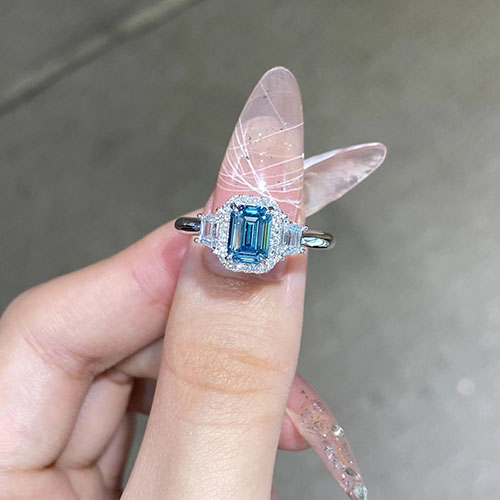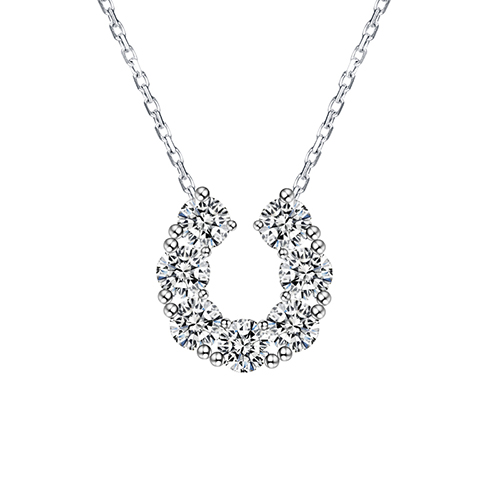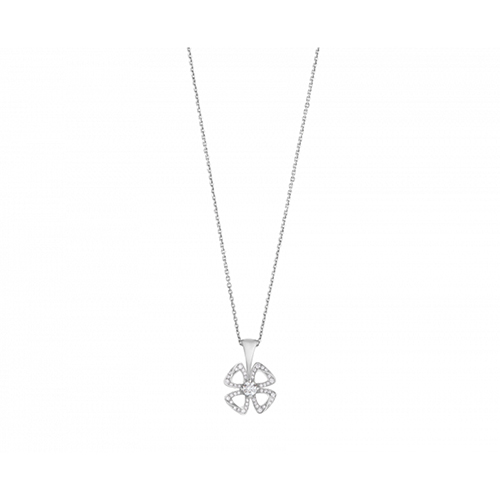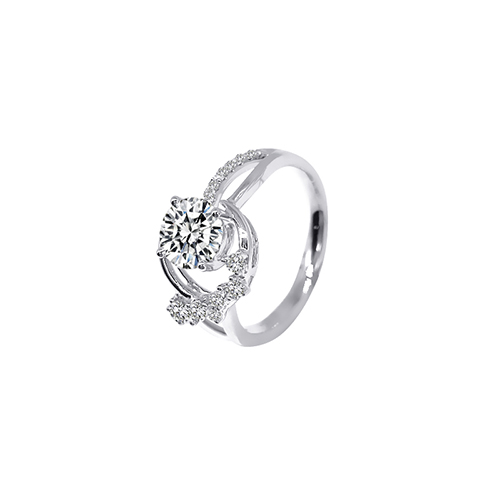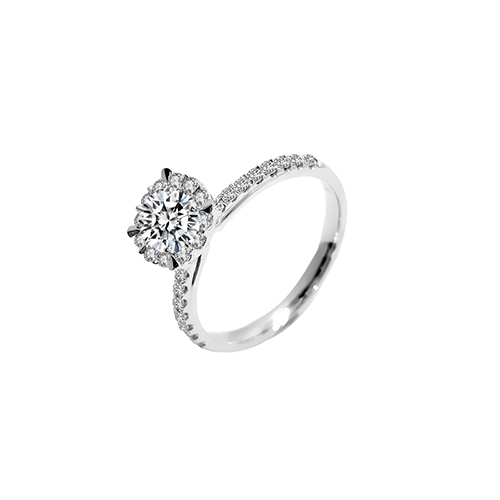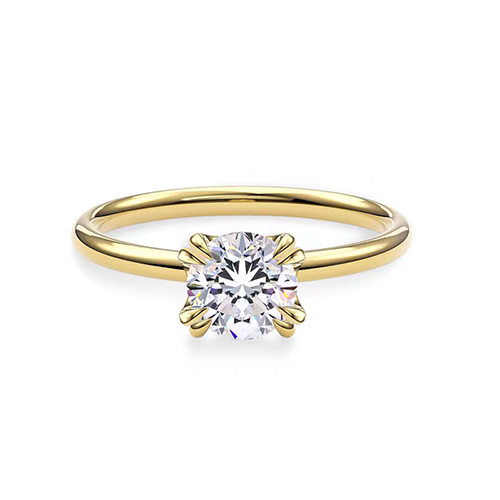4Cs: What Is Diamond Cut?
Diamond Cut Definition
The cut of a diamond refers to the proportion and accuracy of the various faces and shapes formed after the diamond is carefully polished by the cutter. Unlike a diamond’s other characteristics, such as color, clarity, and carat, cut is primarily concerned with the diamond’s optical effects, including the refraction, reflection, and scattering of light. A good cut can maximize the fire, brightness and sparkle of a diamond, while a poor cut will affect the optical effect of the diamond, causing it to look dull and even affecting its value.
Diamond Cut Standards
The cut quality of diamonds is usually rated by professional organizations, the most famous of which are the Gemological Institute of America (GIA) and the International Gemological Institute (IGI). GIA’s evaluation standards for diamond cut are mainly based on the following aspects:
1. Proportions
The proportions of a diamond refer to the proportional relationship between the various parts of the diamond (such as table, crown, girdle, culet, etc.). Each cut facet of a diamond should be precisely angled and proportioned to ensure that light can reflect back and forth between the multiple facets inside the diamond and eventually scatter out of the top, creating brilliant brilliance. A diamond that is too large or too small in proportion will affect its optical effect.
Common diamond proportion parameters include:
Table Percentage:
The table is the flat surface on the top of the diamond, and the width ratio affects the brightness of the diamond. A table that is too large will make the diamond appear flat, while a table that is too small may allow light to escape prematurely, reducing the diamond’s fire.
Crown Height and Crown Angle:
The crown is the part from the top of the diamond to the girdle. The accuracy of the crown height and crown angle affects the refraction of light.
Pavilion Angle and Pavilion Depth:
The pavilion is the bottom of the diamond. Adjustment of the pavilion angle and depth also has an important impact on the light reflection of the diamond.
2. Symmetry
Symmetry refers to whether all sides of a diamond are even and balanced during the cutting process. Good symmetry ensures that each cut surface is in the right place and has consistent angles and shapes. If a diamond develops deviations or irregular facets during the polishing process, light cannot reflect and refract in the ideal way, affecting its overall beauty.
3.Polish
Polish refers to the quality of a diamond’s surface smoothness and affects its luster and reflectivity. If there are scratches, flaws or rough spots on the diamond surface, it will affect the refraction of light, causing the diamond to lose its original sparkle. Excellent polishing can make the surface of a diamond as smooth as a mirror, enhance the reflection and scattering effect of light, and show the brightest side of the diamond.
4. Optical Performance
The optical effect of a diamond is one of the core indicators for evaluating its cut quality. An ideally cut diamond allows light entering the diamond to reflect internally and eventually refract out from the top, creating an extremely captivating light. The optical effects of diamonds include brightness, fire and scintillation.
Brightness:
It refers to the brightness of the white light reflected by the diamond. It mainly depends on the cut angle and symmetry of the diamond.
Fire:
It is the colored light reflected by diamonds and is one of the special optical effects of diamonds. The performance of fire is closely related to the diamond’s cut, color, clarity and other factors.
Scintillation:
It refers to the flashing light spots of a diamond when it moves, usually especially obvious when the light changes. The sparkle depends on the precision of the cut and the size and shape of the diamond.
Diamond Cut Grades
GIA (Gemological Institute of America) evaluates diamond cut using five grades from “Excellent” to “Poor”:
1. Excellent
The diamond is cut to a level of perfection, with all proportions, symmetry and polish being very precise, fully displaying the diamond’s fire and brilliance. The light entering the diamond can be reflected and refracted to the maximum extent, making the diamond look bright, sparkling and dazzling.
2. Very Good
The cut is very good and the optics are near perfect. Although there are some minor flaws or deviations, the diamond is still guaranteed to have high brilliance and fire, and the appearance is very charming.
3. Good
The cut meets basic standards and the diamond’s optics are still satisfactory, but the brilliance and brightness may be slightly inferior compared to the “Excellent” grade. The refraction and reflection effects of light are relatively average, but it can still maintain a certain sparkling effect.
4. Fair
The cut quality of the diamond is medium, and the optical effect may be significantly deficient. The reflection and refraction of light are poor, resulting in the diamond not looking like much brightness and fire. Such cuts often do not bring out the beauty and brilliance that a diamond should have.
5. Poor
The cut quality of the diamond is poor, and the refraction and reflection of light are extremely unsatisfactory. Due to improper cutting, diamonds appear dull and have poor optical effects, making it difficult to reflect the true value of the diamond.
The History and Evolution of Diamond Cut
The history of diamond cutting goes back centuries. The earliest diamond cutting was relatively simple, usually just polishing the diamond into a few sides to improve its beauty and durability. With the continuous advancement of technology, diamond cutting has gradually become more complex and exquisite, and the art of cutting has attracted more and more people’s attention.
1. Early Cut
From the late 16th century to the early 17th century, diamond cutting entered a new stage. Cutting techniques at the time were relatively simple, and diamonds had a small number of facets, usually in a simple round or wedge shape. These early cuts were primarily intended to enhance the diamond’s brilliance and durability rather than maximize its optical effect.
2. Classical Cut (Classical Round Cut)
By the 19th century, diamond cutting had further developed. At the end of the 19th century, the classical round cut became the mainstream of diamond cutting. This cutting method uses up to 58 cutting surfaces (including table and bottom surfaces). This cut can reflect and refract light to the greatest extent, giving the diamond a charming brilliance and becoming the most common cut form of modern diamonds.
3. Modern Cut
With the continuous advancement of technology and the in-depth understanding of optical effects, the standards for diamond cutting have gradually been clarified, and various cutting forms have emerged, such as oval, square, heart and marquise, etc. These diverse cutting methods not only meet consumers’ different needs for diamond appearance, but also promote the development of the diamond industry.
Diamond cutting is not only the art of carving diamonds, it is a complex craft that combines art and science. Excellent diamond cutting can make diamonds shine with dazzling fire and brightness under light, showing the beauty and value of diamonds. The quality of the cut is directly related to the appearance and market value of the diamond. Therefore, cut is one of the most important considerations when choosing a diamond.
By understanding diamond cutting standards and understanding the optical effects of diamonds, we can not only better appreciate the beauty of diamonds, but also make more rational and informed purchasing decisions. Whether you are choosing a diamond ring of your choice or giving it as a precious gift, the cut will play a role that cannot be ignored.

